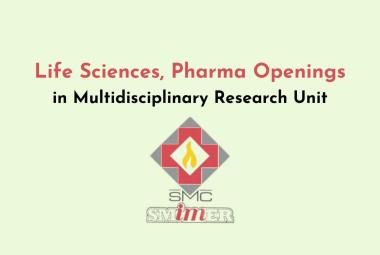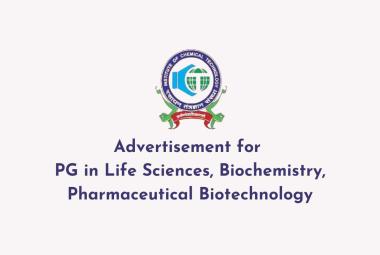ABOUT AUTHORS:
Neha singh*1, Chandana Majee2
1.M.Pharm ( Department of Pharmaceutics)
2.Assistant Professor, Departmrnt of pharmaceutical chemistry.
Noida Institute of Engineering and Technology, Noida
*neha8april@gmail.com
ABSTRACT:
In order to achieve a successful colon targeted drug delivery system, a drug needs to be protected from degradation, release and/or absorption in the upper portion of the gastrointestinal tract (GIT) and then ensure abrupt or controlled release in the proximal colon. Such a system can be formulated by utilizing microbial triggering degradation of polymer coating/ gastro intestinal (GI) transit time (time dependent)/ pH dependent approach etc. But unfortunately it has been found that colonic microflora, GI transit time and pH varies considerably inside a human system by several factors, in addition to this the native biodegradable polysaccharides which are used widely for the microbial triggering colonic drug delivery system (CDDS), are having high aqueous solubility on account of which a single unit colon targeted drug delivery systems may suffer from dose dumping due to overall catastrophic failure of the film around a monolith, which would then release the whole drug, that may lead to drastically compromised systemic drug bioavailability or loss of local therapeutic action in the colon. This review emphasizes some of the causes which make a single unit dosage form unsuitable for targeting to colon by using microbial triggering/GI transit time/pH dependent approach, and at the same time discusses researches which have been carried out to alleviate these problems by utilizing multiparticulate combined approaches.
REFERENCE ID: PHARMATUTOR-ART-1785
INTRODUCTION:
Targeted drug delivery into the colon is highly desirable for local treatment of a variety of bowel diseases such as ulcerative colitis, Crohn’s disease, amebiosis, colonic cancer, local treatment of colonic pathologies, and systemic delivery of protein and peptide drugs. The colon specific drug delivery system (CDDS) should be capable of protecting the drug in route to the colon i.e. drug release and absorption should not occur in the stomach as well as the small intestine, and neither the bioactive agent should be degraded in either of the dissolution sites but only released and absorbed once the system reaches the colon.
The colon is believed to be a suitable absorption site for peptides and protein drugs for the following reasons:
(i) Less diversity, and intensity of digestive enzymes.
(ii) Comparative proteolytic activity of colon mucosa is much less than that of observed in the small intestine, thus CDDS protects peptide drugs from hydrolysis, and enzymatic degradation in duodenum and jejunum, and eventually releases the drug into ileum or colon which leads to greater systemic bioavailability.
(iii) And finally, because the colon has a long residence time which is up to 5 days and is highly responsive to absorption enhancers
Because of the high water absorption capacity of the colon, the colonic contents are considerably viscous and their mixing is not efficient, thus availability of most drugs to the absorptive membrane is low. The human colon has over 400 distinct species of bacteria as resident flora, a possible population of up to 1010 bacteria per gram of colonic contents. Among the reactions carried out by these gut flora are azoreduction and enzymatic cleavage i.e. glycosides.These metabolic processes may be responsible for the metabolism of many drugs and may also be applied to colon-targeted delivery of peptide based macromolecules such as insulin by oral administration.Table 1,2&3
Table 1 : Colon targeting diseases, drugs and sites
|
Target sites |
Disease conditions |
Drug and active agents |
|
Topical action Local action Systemic action |
Inflammatory Bowel Diseases, Irritable bowel disease and Crohn’s disease. Chronic pancreatitis Pancreatactomy and cystic fibrosis, Colorectal cancer To prevent gastric irritation To prevent first pass metabolism of orally ingested drugs Oral delivery of peptides Oral delivery of vaccines |
Hydrocortisone, Budenoside, Prednisolone, Sulfaselazine, Olsalazine, Mesalazine, Balsalazide. Digestive enzyme supplements 5-Flourouracil. NSAIDS Steroids Insulin Typhoid |
Table 2: Criteria for selection of drugs for CDDS
|
Criteria |
Pharmacological class |
Non-peptide drugs |
Peptide drugs |
|
Drugs used for local effects in colon against GIT diseases Drugs poorly absorbed from upper GIT Drugs for colon cancer Drugs that degrade in stomach and small intestine Drugs that undergo extensive first pass metabolism Drugs for targeting |
Anti-inflammatory drugs Antihypertensive and antianginal drugs Antineoplastic drugs Peptides and proteins Nitroglycerin and corticosteroids Antiarthritic and antiasthamatic drugs |
Oxyprenolol, Metoprolol, Nifedipine Ibuprofen, Isosorbides, Theophylline Pseudoephedrine Bromophenaramine, 5-Flourouracil, Doxorubicin Bleomycin, Nicotine Prednisolone, hydrocortisone, 5-Amino-salicylic acid |
Amylin, Antisense oligonucleotide Cyclosporine, Desmopressin Epoetin, Glucagon Gonadoreline, Insulin, Interferons Protirelin,sermorelin, Saloatonin Somatropin,Urotoilitin |
Factors affecting colon absorption
- Physical properties of drug such as pKa and degree of ionization.
- Colonic residence time as commanded by GIT motility.
- Degradation by bacterial enzymes and metabolic products.
- Local physiological action of drug.
- Selective and non-selective binding to mucus.
- Disease state.
Table 3: Approaches for the development of colon targeted drug delivery
|
Approach Basic feature |
|
I. Chemical Approaches |
|
1. Azo conjugates- The drug is conjugated via an azo bond |
|
2. Cyclodextrin conjugates -The drug is conjugated with cyclodextrin |
|
3. Glycosidic conjugates-The drug is conjugated with glycoside |
|
4. Glucuronide conjugate-The drug is conjugated with glucuronate |
|
5. Dextran conjugates-The drug is conjugated with dextran |
|
6. Polypeptide conjugates-The drug is conjugated with polypeptide |
|
7. Polymeric prodrugs- The drug is conjugated with polymer |
|
II. Pharmaceutical Approaches |
|
1. Coating with polymer |
|
i. Coating with pH-sensitive polymer Formulation coated with enteric polymers release drug when pH moves towards alkaline range |
|
ii. Coating with biodegradable polymer Drug is released following degradation of the polymer due to the action of colonic bacteria |
|
2. Embedding in matrices |
|
i. Embedding in biodegradable |
|
Polysaccharides |
|
The embedded drug in polysaccharide matrices is released by swelling and biodegradable action of |
|
polysaccharides. |
|
ii. Embedding in pH sensitive matrices Degradation of pH sensitive polymer in the GIT releases the embedded drug |
|
3. Timed released systems |
|
4. Redox-sensitive polymers |
|
5. Bioadhesive system Drug coated with bioadhesive polymer that selectively provides adhesion to colonic mucosa. |
|
6. Coating of miroparticles Drug is released through semipermeable membrane |
|
7. Osmotic controlled delivery Osmotic pressure |
METHODS:
The various strategies for targeting orally administered drugs to the colon include covalent linkage of a drug with a carrier, coating with pH-sensitive polymers, formulation of timed released systems, exploitation of carriers that are degraded specifically by colonic bacteria, bioadhesive systems and osmotic controlled drug delivery systems. Various prodrugs (sulfasalazine, ipsalazine, balsalazine and olsalazine) have been developed that are aimed to deliver 5-amino salicylic acid (5-ASA) for localized chemotherapy of inflammatory bowl disease (IBD). Microbially degradable polymers especially azo crosslinked polymers have been investigated for use in targeting of drugs to colon. Certain plant polysaccharides such as amylose, inulin, pectin and guar gum remains unaffected in the presence of gastrointestinal enzymes and pave the way for the formulation of colon targeted drug delivery systems. The concept of using pH as a rigger to release a drug in the colon is based on the pH conditions that vary continuously down the gastrointestinal tract. Times dependent drug delivery systems have been developed that are based on the principle to prevent release of drug until 3-4 h after leaving the stomach. Redox sensitive polymers and bioadhesive systems have also been exploited to deliver the drugs into the colon.
RESULTS:
The approach that is based on the formation of prodrug involves covalent linkage between drug and carrier. The type of linkage that is formed between drug and carrier would decide the triggering mechanism for the release of drug in colon. The presence of azo reductase enzymes play pivotal role in the release of drug from azo bond prodrugs while glycosidase activity of the colonic microflora is responsible for liberation of drugs from glycosidic prodrugs. Release of drugs from azo polymer coated dosage forms is supposed to take place after reduction and thus cleavage of the azo bonds by the azoreductase enzymes present in the colonic microflora. Natural polysaccharides have been used as tools to deliver the drugs specifically to the colon. These polysaccharides remain intact in the physiological environment of stomach and small intestine but once the dosage form enters into colon, it is acted upon by polysaccharidases, which degrades the polysaccharide and releases the drug into the vicinity of bioenvironment of colon. However, they should be protected while gaining entry into stomach and small intestine due to enormous swelling and hydrophilic properties of polysaccharides. This has been achieved either by chemical crosslinking or by addition of a protective coat. Formulation coated with enteric polymers releases drug when pH move towards alkaline range while as the multicoated formulation passes the stomach, the drug is released after a lag time of 3-5 h that is equivalent to small intestinal transit time. Drug coated with a bioadhesive polymer that selectively provides adhesion to the colonic mucosa may release drug in the colon.
CONCLUSIONS:
Improved drug delivery systems are required for drugs currently in use to treat localized diseases of the colon. The advantages of targeting drugs specifically to the diseased colon are reduced incidence of systemic side effects, lower dose of drug, supply of the drug to the biophase only when it is required and maintenance of the drug in its intact form as close as possible to the target site.
REFERENCES:
1.AK Philip, B Philip. Colon targeted drug delivery system: a review on primary and novel approaches. Oman Med J 2010; 25: 70-78.
2.Colon Targeted Drug Delivery System – A Novel Perspective Bhushan Prabhakar Kolte
3.Pharmaceutical approaches to colon targeted drug delivery systems. Chourasia MK, Jain SK.
4.N Howard, E Steven, C Wilson, P Welling, M Bakhshaee. Evaluationof PulsincapTM to provide regional delivery of dofetilide to the human GI tract. Int J Pharm 2002; 236: 27-34.
5.MULTIPARTICULATE COMBINED APPROACHES FOR COLON SPECIFIC DRUG DELIVERY-Saroj Kumar Pradhan
6. Philip AK, Dabas S, Pathak K. Optimized prodrug approach: A means for achieving enhanced anti-inflammatory potential in experimentally induced colitis. J Drug Target 2009; 17:235-241.
7. Oluwatoyin AO, John TF. In vitro evaluation of khaya and albizia gums as compression coating for drug targeting to the colon. J Pharm Pharmacol 2005; 57: 63-168.
8.Chien YW. Oral drug delivery and delivery systems. In: Chien YW, editor. Novel drug delivery systems. New York: Marcel Dekker Inc; 1992; 139-196.
9. Reddy MS, Sinha RV, Reddy DS. Colon targeted systems. Drugs Today 1999; 35(7):537.
10.Antonin KH, Rak R, Bieck PR, Preiss R, Schenker U, Hastewell J, Fox R, Mackay M, The absorption of human calcitonin from the transverse colon of man. Int J Pharm 1996; 130(1):33-39.
11. Mackay M, Tomlinson E. Colonic delivery of therapeutic peptides and proteins, In: Biek PR, editors. Colonic drug absorption and metabolism. New York: Marcel Dekker, 1993; 159-176.
12. Chaurasia, M.K., Jain S.K., Pharmaceutical approaches to colon targeted drug delivery systems, J. pharm. Sci.(www.ultberta.ca), (2003), 33-66.
13. Chourasia, M. K., Jain, S.K., Potential of guar gum microspheres for target specific drug release to colon.,Journal of Drug Targeting., (2004), 12, 435-442.
NOW YOU CAN ALSO PUBLISH YOUR ARTICLE ONLINE.
SUBMIT YOUR ARTICLE/PROJECT AT articles@pharmatutor.org
Subscribe to Pharmatutor Alerts by Email
FIND OUT MORE ARTICLES AT OUR DATABASE









